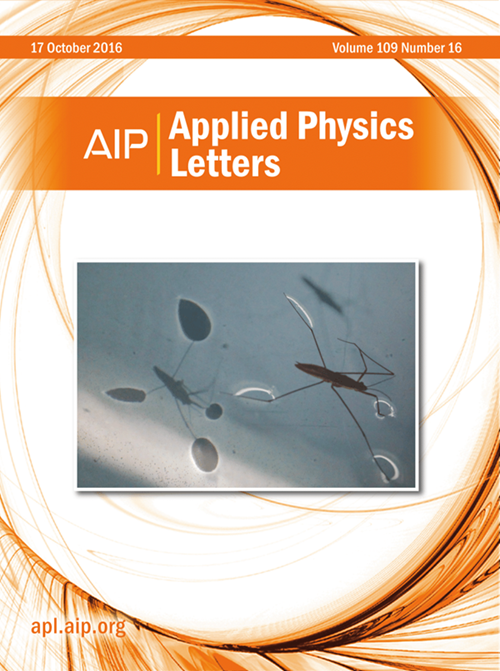通过对称性破缺增强双韦尔半金属中的环形光电效应
IF 3.6
2区 物理与天体物理
Q2 PHYSICS, APPLIED
引用次数: 0
摘要
近十年来,Weyl 半金属已成为凝聚态物理学的热门话题。除了由手性反常和反常霍尔效应驱动的负磁阻等引人入胜的电输运现象外,它们还表现出圆周光电效应(CPGE)等引人入胜的二阶光电响应。在这封信中,我们利用有效模型研究了一类受 C3zT 对称性保护的双韦尔半金属中的 CPGE。与受 Cnz(n = 4,6)对称性保护的双韦尔半金属不同,当时间反转对称性 T 被打破时,一个受 C3zT 保护的双韦尔点(WP)会演化成四个单韦尔点,其中三个韦尔点与 C3z 对称性相关,这些韦尔点具有相同的拓扑电荷并位于同一能级。由于三个 WP 的拓扑电荷结合在一起,这种独特的配置增强了 CPGE 的踪迹,从而产生了更高的量子化高原。我们的发现为未来光电器件的发展提供了广阔的前景。本文章由计算机程序翻译,如有差异,请以英文原文为准。
Enhancing the circular photogalvanic effect in double Weyl semimetals via symmetry breaking
Weyl semimetals have emerged as a hot topic in condensed matter physics in last decade. Beyond their intriguing electrical transport phenomena, such as the negative magnetoresistance driven by the chiral anomaly and the anomalous Hall effect, they also exhibit intriguing second-order optoelectronic responses, such as the circular photogalvanic effect (CPGE). In this Letter, we investigate the CPGE in a class of double Weyl semimetal protected by the C3zT symmetry by using the effective model. Unlike double Weyl semimetal protected by Cnz (n = 4, 6) symmetry, when time-reversal symmetry T is broken, one C3zT-protected double Weyl point (WP) evolves into four single WPs, three of which are related by C3z symmetry, and these WPs share the same topological charge and reside at the same energy level. This unique configuration enhances the CPGE trace due to the combined topological charge of the three WPs, resulting in a higher quantized plateau. Our findings provide promising prospects for the development of optoelectronic devices in the future.
求助全文
通过发布文献求助,成功后即可免费获取论文全文。
去求助
来源期刊

Applied Physics Letters
物理-物理:应用
CiteScore
6.40
自引率
10.00%
发文量
1821
审稿时长
1.6 months
期刊介绍:
Applied Physics Letters (APL) features concise, up-to-date reports on significant new findings in applied physics. Emphasizing rapid dissemination of key data and new physical insights, APL offers prompt publication of new experimental and theoretical papers reporting applications of physics phenomena to all branches of science, engineering, and modern technology.
In addition to regular articles, the journal also publishes invited Fast Track, Perspectives, and in-depth Editorials which report on cutting-edge areas in applied physics.
APL Perspectives are forward-looking invited letters which highlight recent developments or discoveries. Emphasis is placed on very recent developments, potentially disruptive technologies, open questions and possible solutions. They also include a mini-roadmap detailing where the community should direct efforts in order for the phenomena to be viable for application and the challenges associated with meeting that performance threshold. Perspectives are characterized by personal viewpoints and opinions of recognized experts in the field.
Fast Track articles are invited original research articles that report results that are particularly novel and important or provide a significant advancement in an emerging field. Because of the urgency and scientific importance of the work, the peer review process is accelerated. If, during the review process, it becomes apparent that the paper does not meet the Fast Track criterion, it is returned to a normal track.
 求助内容:
求助内容: 应助结果提醒方式:
应助结果提醒方式:


